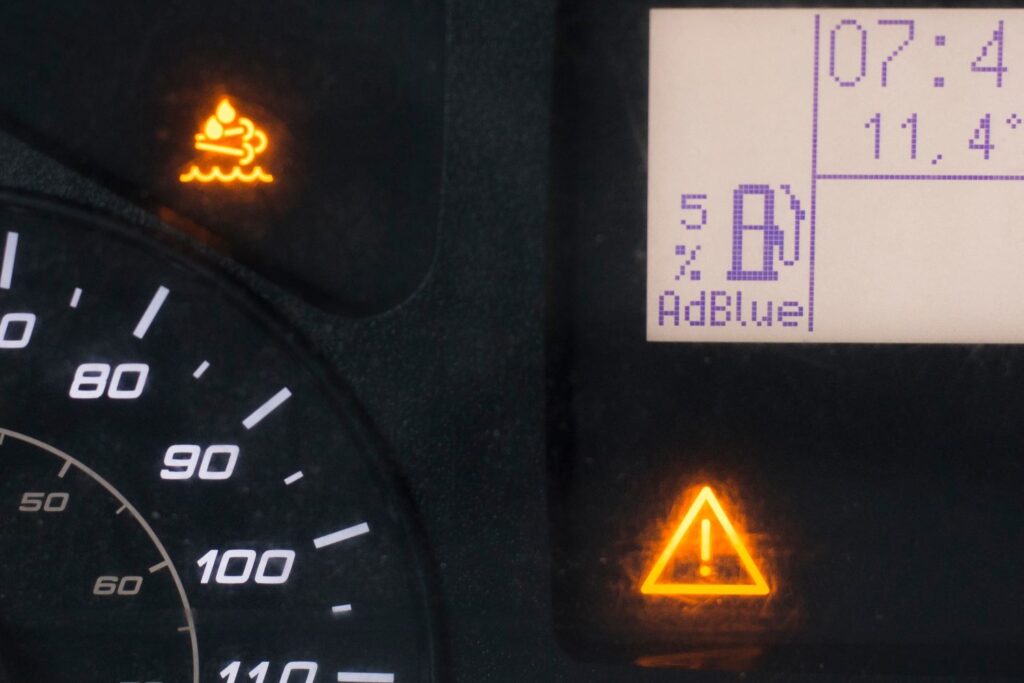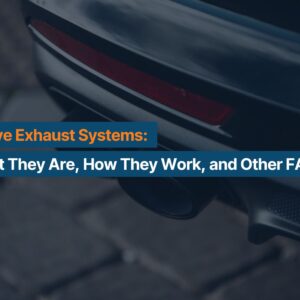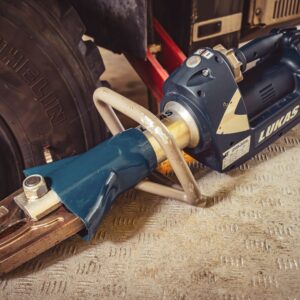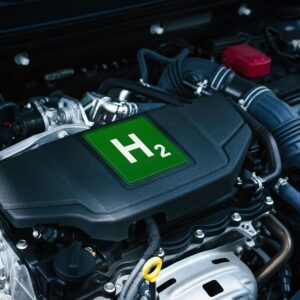To help reduce harmful emissions, the European Union (EU) first introduced the Euro emissions standards in 1992, which set specific limits for carbon monoxide (CO) emissions. Since then, regulations have only gotten stricter, with the latest standard aimed at reducing NOx emissions.
According to the Euro 6 emissions standards, all diesel vehicles are limited to a particulate matter (PM) of 0.008 g/mi, 0.81 g/mi of CO, and 0.13 g/mi of nitrogen oxide (NOx).
Following these regulations is no easy task, but with the use of AdBlue, manufacturers have found a way to do so without sacrificing engine power and performance.
What Is AdBlue?

AdBlue is a diesel exhaust fluid (DEF) that helps reduce a diesel vehicle’s NOx exhaust emissions. It’s stored in a tank with a blue filler cap, which is separate from the fuel tank.
While AdBlue and DEF are often used interchangeably, AdBlue is actually a trademarked name under the German Association of the Automotive Industry (VDA).
What Is AdBlue Made of?
AdBlue is a colorless, non-toxic liquid made of 32.5% urea and 67.5% deionized water.
Contrary to popular belief, AdBlue doesn’t use pig urine, which isn’t pure or sterile enough for commercial use. It actually uses a specially formulated high-purity urea made from heating synthetic ammonia and carbon dioxide.
How Does AdBlue Work?
AdBlue is injected into the vehicle’s exhaust system, where it meets hot exhaust gases. The high temperatures in the exhaust system cause AdBlue to release ammonia and carbon dioxide. These chemicals react with NOx gas, effectively converting the harmful emissions into harmless water vapor and nitrogen instead.
Paired with emissions technology, such as Selective Catalytic Reduction (SCR), AdBlue allows most diesel vehicles to meet the Euro 6 emissions regulations.
What Is Selective Catalytic Reduction?
SCR is an effective active emissions control system that reduces the harmful compounds found in exhaust gases. When the exhaust gases flow out of the engine, they enter the SCR system, where DEF is sprayed, beginning the reduction process.
SCR systems need AdBlue or DEF to function properly, which is why you should always top off your tank when necessary.
Which Vehicles Use AdBlue and SCR?
Most vehicles with a diesel engine of over 1.6 liters are equipped with SCR technology and use AdBlue.
Well-known brands such as Audi, BMW, Toyota, and Mercedes-Benz all have diesel vehicles that use AdBlue. Some specific examples include models of the Toyota Land Cruiser, BMW Series 5 Saloon, and Audi A5 Sportback.
Can I Drive My Car Without AdBlue?
In most cases, the vehicle will go into limp mode when it runs out of AdBlue. Limp mode limits the engine’s performance and power to reduce emissions. Other systems, such as the air conditioning and radio, will be turned off to preserve power.
Once you stop and turn off the engine, you won’t be able to restart your car, so it’s always best to refill your AdBlue before it runs out.
What Does an AdBlue Warning Light Mean?

The AdBlue warning light is an indicator light you can find on your dashboard. It will light up when your vehicle detects low AdBlue levels and will stay on until you top off.
Unlike most warning lights, the AdBlue indicator light doesn’t have a standardized symbol yet. Some manufacturers use a pouring bottle, while others simply use the text “AdBlue.”
Can I Refill AdBlue Myself?
Yes, you can refill your AdBlue tank yourself if you have a canister of AdBlue on hand.
Most AdBlue containers are designed to be drip-free, but you should always be extra careful when handling any automotive fluid. While AdBlue is non-toxic, it can still damage your car paint and wiring.
What Happens if I Put AdBlue in the Diesel Tank?
When topping off your vehicle’s AdBlue yourself, make sure you pour the fluid down the right filler cap. Accidentally putting AdBlue in your diesel tank will not only damage the tank but also affect the fuel pump and injection system.
If this happens, don’t turn on the ignition. You’ll have to completely drain your tank before it’s safe to drive your car again.
To avoid this, make sure you correctly identify the AdBlue filler cap before you begin. Its exact location can vary depending on your vehicle, but you can typically find it next to the main fuel filler cap.
In some cars, the filler cap can be found in the trunk or under the hood. If you can’t locate it, you can check your manual or contact your dealer for more information.
Where Can I Buy AdBlue?
Your dealership will typically top off your DEF/AdBlue when you bring in your car to be serviced, but it can be a bit pricey. Some gas stations and automotive retailers also sell AdBlue.
The price of AdBlue can vary depending on several factors, but DEFs can cost anywhere between $10 and $120.
Any information provided on this Website is for informational purposes only and is not intended to replace consultation with a professional mechanic. The accuracy and timeliness of the information may change from the time of publication.



















